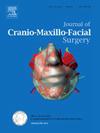微创原位骨提取-人工种植-机器人骨增强术1例报告。
IF 2.1
2区 医学
Q2 DENTISTRY, ORAL SURGERY & MEDICINE
引用次数: 0
摘要
目的:介绍一种机器人辅助微创骨取出-种植体植入-骨增强治疗骨缺损或骨萎缩的技术流程。方法:在手术过程中,在机器人系统内预先规划手术轨迹。在患者登记和完成机械臂校准后,机械臂的精确运动使微创骨取出成为可能,使用环钻,然后用单个螺旋钻扩孔。植入物的最终放置是手工进行的。将自体骨、骨髓血、Bio-Oss颗粒骨集体混合,移植到缺损区,并进行胶原膜覆盖缝合。结果:成功地完成了自体骨截骨术。同时,种植体放置的准确性在临床上是可以接受的。植骨手术顺利完成,术后无明显并发症。在钻井过程中,机械臂施加的垂直和侧向力都在可接受的范围内。机器人手术在整个手术过程中表现出稳定的稳定性,并且证明了相对较短的钻孔时间。结论:新方案可实现自体骨的精确截骨,增强骨缺损或骨萎缩患者的植骨效果。然而,进一步的临床研究是必要的。临床意义:本研究的主要发现为患有骨缺损或骨萎缩的个体提供了一种有希望的替代方法。本文章由计算机程序翻译,如有差异,请以英文原文为准。
Minimally invasive in situ bone extraction–implant implantation–bone augmentation by robot: a case report
Objective
To present a technical process for robot-assisted, minimally invasive bone extraction–implant implantation–bone augmentation in patients with bone defects or bone atrophy.
Method
In this technical process, the surgical trajectory was preplanned within the robotic system. After patient registration and completion of robotic arm calibration, precise movement of the robotic arm enabled minimally invasive bone extraction using a trephine, followed by reaming with a single spiral drill. The final placement of implants was conducted manually. Autologous bone, bone marrow blood, and Bio-Oss granular bone were collectively mixed for grafting into the defect area, accompanied with collagen membrane coverage and subsequent suturing.
Result
The osteotomy of autologous bone was precisely executed. Meanwhile, the accuracy of implant placement was clinically acceptable. The bone graft surgery was successfully completed without any significant postoperative complications. The vertical and lateral forces exerted by the robotic arm during drilling were within an acceptable range. The robotic surgery exhibited consistent stability throughout its operation and demonstrated a relatively short drilling time.
Conclusion
The novel protocol enabled precise osteotomy of autologous bone and enhanced bone grafting in patients with bone defects or atrophy. However, further clinical studies are necessary.
Clinical significance
The primary finding of this study is a promising alternative for individuals suffering from bone defects or bone atrophy.
求助全文
通过发布文献求助,成功后即可免费获取论文全文。
去求助
来源期刊
CiteScore
5.20
自引率
22.60%
发文量
117
审稿时长
70 days
期刊介绍:
The Journal of Cranio-Maxillofacial Surgery publishes articles covering all aspects of surgery of the head, face and jaw. Specific topics covered recently have included:
• Distraction osteogenesis
• Synthetic bone substitutes
• Fibroblast growth factors
• Fetal wound healing
• Skull base surgery
• Computer-assisted surgery
• Vascularized bone grafts

 求助内容:
求助内容: 应助结果提醒方式:
应助结果提醒方式:


